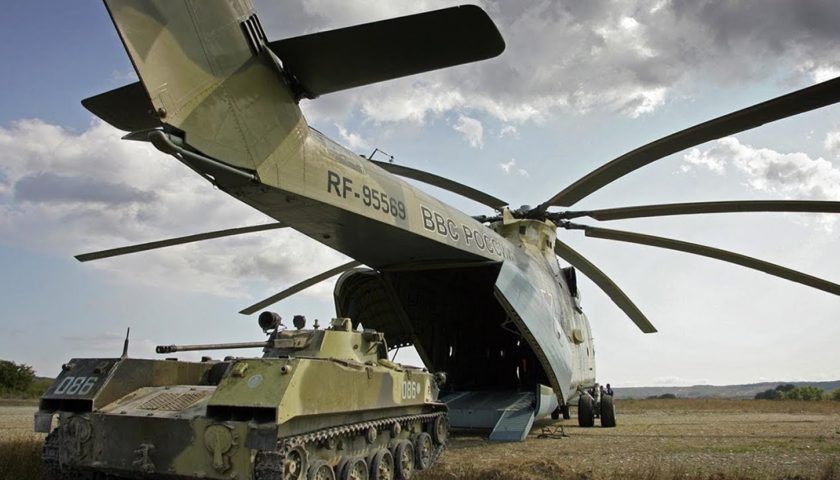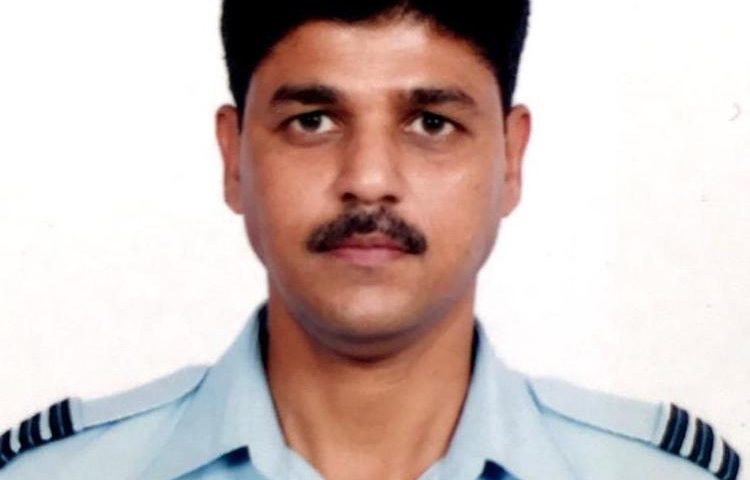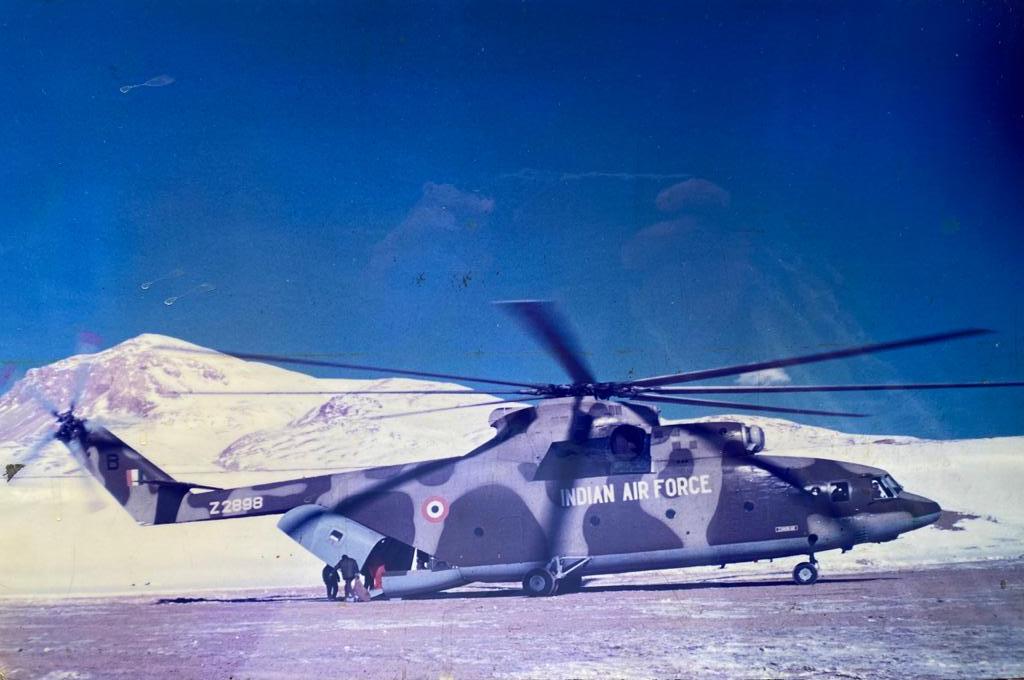The quality of person’s life is in direct proportion to their commitment to excellence, regardless of their chosen field of endeavour.
Vince Lombardi
The Mil Mi-26 is a twin-engine heavy transport helicopter designed and manufactured by Mil Moscow Helicopter Plant, Russia, for both military and civilian roles. It is the largest and powerful helicopter in the world and entered into service in 1985. The Mi-26 can perform a number of tasks, including the transferring of military equipment, namely personnel carriers, and mobile ballistic missiles, to distant locations. Composite material and special alloys are used in the fuselage design to reduce the overall weight of the helicopter. The most striking capability is that its empty weight is half of its maximum take-off weight. Mi-26 features eight main rotor blades and five tail rotor blades fitted above the mid-fuselage section on the hump. The heavy load carrying capacity and high cruise speed feature allow the helicopter to be economically efficient. In this article, we will meet Wg Cdr Vikram Mahajan (Retd), an Indian Air Force (IAF) officer, pilot, and gentleman who had the privilege of operating this heavy-lift transport helicopter in various roles. More about the officer later, but first his flight experience:
- Tell our readers about your military career and specially about helicopter training and the types of helicopters you have operated.
I was commissioned into the helicopter stream of IAF in Jun 1990. I trained on the Chetak (Allouette) helicopter at Helicopter Training School located at Air Force Station, Hakimpet. I was selected to transition to Multi engine helicopters and did my initial conversion on the Mi-8 helicopter at 112 HU, Yelahanka. I subsequently went on to fly the Mi-8, Mi-17, and the Mi-26 helicopters with the IAF. I accumulated 3750 hrs of flying experience in my 22 plus years of service with the IAF.
- Operating Cheetah/Chetak to operating Mi 26 Halo, from light/nimble to the world biggest helicopter, how would you describe the contrast?
The Mi-26 helicopter is the biggest helicopter in the world and has an All-up weight (AUW) of 56,000 kgs in comparison to the 2100 kg AUW of the Chetak. The size and enormity of Mi-26 is really difficult to fathom. From a purely pilot’s perspective the Mi-26 helicopter is an absolute beauty to fly and can almost match the much smaller Chetak/Cheetah helicopters in terms of agility. The overall size of this big machine though requires a much larger and wider operating surface and can pose a challenge in operating it in restricted spaces. The huge rotor downwash also poses a hazard to the men, material, and equipment on the ground near the operating surfaces and needs prior planning and organizing.
From a pilot’s perspective, the machine was an absolute beauty to fly. The unique thing about Mi-26 was that all the problems it had to give would be on ground itself and once you fixed them, it never let down a pilot in the air. It handled very well both in the roll and pitch planes with quick response to control inputs. After having gained some experience we were able to fly it with almost the same agility as that of a Mi-8/17.
- The name of the ‘Halo’ unit was Featherweights, was it a mistake or is there some story which you would like to share with our readers?
The name FEATHERWEIGHTS was christened by Wg Cdr COJ Shackleton who was among the pioneers of this helicopter in IAF. The name is ironically apt and the logo of the unit also states “THE DIFFICULT WE DO NOW; THE IMPOSSIBLE TAKES A LITTLE TIME”. The unit over the years has repeatedly come to prove these words to be true by undertaking missions hitherto considered beyond helicopter capability.
- What was your initial reaction when you first saw the aircraft? Can you give us a comparison of the size and weight so that it is easier to understand what we are talking about?
The Mi-26 helicopter is gigantic in terms of size and weight and it ends up dwarfing other helicopters. When I was selected to fly the Mi-26 helicopter I was already flying Mi-8 helicopter which is a medium helicopter with AUW of 12000 kgs. On reaching the Mi-26 unit as I stood in front of the helicopter, my initial reaction was of extreme awe. It was rather difficult to believe that this big helicopter flies also. The helicopter has an overall length of 40 m and a rotor diameter of 32 m. The helicopter is capable of carrying 20,000 kgs of load both internally and externally. It can transport 82 fully armed troops or can be configured to carry up to 60 stretcher cases. The cargo compartment can easily fit in large-sized vehicles and equipment. APC (Armoured Personnel Carrier) of the Mechanised Infantry or 3 Ton/5 ton vehicles can also be easily loaded by simply driving in and out through rear cargo doors and large cabin volume.

- What kind of loads you carried normally on routine maintenance mission in Northern Sector? Can you tell something about the most interesting or biggest load which you carried (inside and underslung)?
The helicopter has been extensively used in the Northern Sector ever since it’s induction in 1986. Transportation of important and critical military equipment to otherwise inaccessible areas has been facilitated over the years using the Mi-26 helicopter. It has transported Bofors guns in knockdown condition to the Base Camp of Siachen Glacier. During the 1999 Kargil War, Mi-26 helicopter was used to quickly position large-sized military equipment in the Drass Sector as well as some radars along the LAC.
One of the most interesting airlifts involved moving a rocket booster of a strategic missile being developed by the country. The rocket booster weighed 19000 kgs and contained solid fuel. It could not be transported by land due to non-availability of X-Ray facilities at the launch site. The rocket booster was lifted out of Sriharikota and positioned at Wheeler Island in Orissa. The sensitive nature of the load required rather careful planning and handling. Needless to say that Mi-26 helicopter has played a very important role in the success of the country’s Strategic Missile Development Program.
Rail link from Jammu to Srinagar is presently being constructed in an attempt to enhance the integration of Jammu and Kashmir with the rest of the country. The Mi-26 helicopter has been used in support of this endeavour and has positioned lots of machinery and material in areas totally inaccessible by road. This has resulted in a drastic reduction in the time taken in certain sections of the project.
Among the most interesting underslung operation (external carriage) undertaken by me was the airlift of a Mi-8 helicopter which had crashed at Darbangha in Bihar while undertaking flood relief operations. The Mi-8 helicopter suffered a loss of power while airlifting students stranded at the hostel of Darbhanga Medical College. The crashed helicopter was lodged between a U shaped hostel building and was almost completely submerged by the floodwaters. I along with two Flight Gunners did the initial survey for planning the underslung operations. The operation required precision hovering and underslung lift as there was a possibility of the load fouling with the surrounding buildings. The damaged helicopter was successfully airlifted by underslung operations and repositioned at the airfield at Air Force Station, Darbhanga.
- Carrying load inside the aircraft is normal, but a load when carried outside is different. It is like towing another vehicle that has its own will and mind. What are the difficulties/precautions when you carry load underslung?
As compared to the carriage of load internally, underslung operations definitely are more challenging. On many occasions, the load swings due to shape and size when the helicopter increases speed. This alters the helicopter CG and makes it difficult to control the helicopter. Therefore, good analysis and planning are required prior to undertaking an underslung airlift. This entails studying the load for hooking points, it’s Center of Gravity and it’s likely behaviour at speed. The helicopter has different cable lengths for carrying different loads externally and also depending on the place where the load is to be lifted and subsequently positioned. All these aspects are assessed in planning the underslung operations.
- Generally people think that if it is helicopter it would be carrying a maximum of 10 passengers or flying maximum of 5000 ft. Any anecdote which happened when other aviators were not aware of the size and load-carrying capacity of the Halo helicopter?
The word “Helicopter” is generally associated with small or at best medium-sized machines. However, contrary to popular perception, a large number of medium and large helicopters are used worldwide displaying the ability to carry a large number of personnel or cargo. In addition, helicopters especially military helicopters of Indian Air Force possess very good high altitude performance. They have been extensively used in the mighty Himalayas in the North and North-East regions of our country. The Mi-8/Mi-17 helicopters can carry 24 troops and up to 4000 kgs of cargo. The mighty Mi-26 can carry 82 fully armed troops and up to 20000 kg of cargo. All the three helicopters have a service ceiling of 20000 ft and routinely land up to altitudes of 17000 ft.
In Jan 1995, there was heavy snowfall in Kashmir and as a result, Banihal tunnel got blocked. Mi-26 was inducted into Jammu to aid in the logistical support operations for Indian Army and IAF troops in the valley. We lifted coal and rations from Jammu to Srinagar/ Awantipur and on the return brought back troops heading home on leave. The cheer on the faces of the troops on seeing the Mi-26 land at Srinagar was a sight to behold. On 23 Jan 1995, on the last shuttle to Jammu, I (then Flt Lt) was the Capt with Late Flt Lt Alok Singh as my co-pilot. The temperature was -2 deg C. We both decided to try and take out maximum troops to Jammu. As per performance chart, we could easily carry the full load of 20 tons implying 200 pax. But volume was an issue. I personally supervised the troops loading in the helicopter. In the end, we were able to airlift 155 pax. The POB was 163 (155 plus 8 crew). It is by far the largest number ever carried in a helicopter. When we asked for the startup the ATC reconfirmed two times the POB and we had to reassure them that the number was indeed correct. An IAC B737 was also starting up at the time for Delhi with 120 POB and he asked us the type of aircraft. This was an apt moment to rub it into the guy and I piped up on R/T and said that it’s just a helicopter. The palpable glee on the faces of the cockpit crew including the Co-pilot, Navigator and Flight Engineer is a lifetime memory.

- The helicopter can be described as strategic heavy-lift aircraft. It has a special ability to operate in mountain terrain while carrying heavy loads. Tell us something about any strategic mission you undertook.
DBO or Daulat Beg Oldie is located along the LOC with China in Northern Ladakh. It is located strategically south of the Karakoram Pass. It is manned permanently by the Indian Army. A need was felt over the years to enhance the airlift capability at DBO. This necessitated the development of an ALG (Advanced Landing Ground) to allow operations of larger aircraft like AN-32 and C-130. The Mi-26 helicopter was extensively used to transport PSP sheets and other material required for operationalising the ALG at DBO. This task wasn’t done overnight but achieved over a few years of Mi-26 effort. The limitations of helicopter performance at high altitude precluded the use of the helicopter in the summer months. The weather played tyrant in the winter months thereby increasing the overall time taken.

- Considering its size and load it is but natural to employ these aircraft for assisting civil administration during the natural or man-made disaster. Any special mission you undertook during aid to civil agency?
The versatility of the helicopter as a machine coupled with the unique capabilities of the Mi-26 helicopter render it very useful for use in situations requiring Aid to Civil Administration. Over the last three decades plus, the MI-26 has been extensively used for this purpose. From being used during the Latur and Bhuj earthquakes to the super cyclone in Orissa, the flash floods in Uttarakhand and various flood relief operations, the mighty Mi-26 has airlifted men, machinery, relief aid and equipment expeditiously to speed up the relief and rehabilitation work of the Civil Administration.
- You are presently working in the commercial airline as a pilot. Fixed-wing and rotary-wing operations are very different. Tell us about the similarities and differences that exist in both operations?
The helicopter is a very versatile machine and can be used for a variety of roles and can be practically used in all types of terrain. They can even be operated from unprepared surfaces. The Fixed-wing aircraft need prepared surfaced for operations and are severely limited by terrain considerations at many places. Also, comparatively the roles and scope of operations of fixed-wing aircraft is rather limited compared to helicopters. Most of the helicopter operations are in remote areas not serviced by Nav Aids. Therefore, helicopter flying is almost entirely visual flying whereas fixed-wing flying is almost entirely Instrument flying. On the similarities standpoint from the pilots perspective both types of machines need performance planning and to fly the machine to the prescribed airframe and engine limits. As a last word, I would like to say that the type of machine that one flies is inconsequential as long one does it well. Nothing (R) Nothing gives a pilot more happiness, pride and satisfaction than a flight flown well.

Vikram further says, ‘I consider myself distinctly lucky to have flown the biggest helicopter in the world. It is unlikely that another machine with similar or higher capabilities would be made at least in the foreseeable future. Till then I along with all the other lucky Mi-26 pilots are entitled to keep our collars up.’ I agree though grudgingly.

Wg Cdr Vikram Mahajan (Retd) was commissioned in Indian Air Force on 16 Jun 1990. He trained on the HPT-32 and HJT-16 Mk II aircraft in the pre-commissioning training. He joined the helicopter stream and flew Alouette, Mi-8, Mi-17 and the Mi-26 helicopters with the IAF. He took premature retirement in Sep 2012 and worked in the offshore helicopter industry for 5 years flying the Bell 412 helicopter. He is qualified on both helicopters and aeroplanes and holds both ATPL(Aeroplane) and ATPL(Helicopters). He has a total experience of 7200 hrs accident/incident free flying over 31 yrs. He is currently flying Bombardier Dash 8 Q400 aircraft with SpiceJet.
Related Article: Marching ahead, Women officers of Indian Armed Forces. Click to read.
Related Article: Women voices in Military Aviation. Click to read.
Related Article: What are you waiting for. Click to read.



